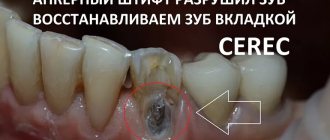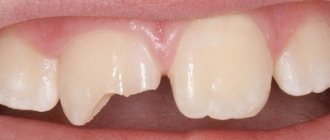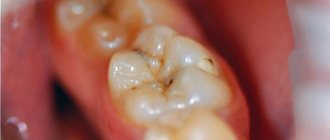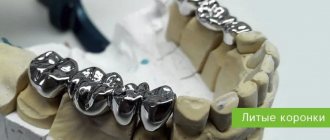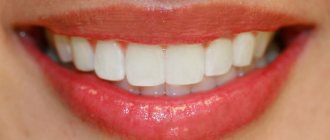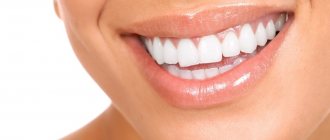home
Aesthetic dentistry
Dental restoration
Front teeth
Do chips, chips, gaps between teeth, a crooked or chipped tooth complicate your life and prevent you from smiling sincerely? Forget about it! Today everyone can become the owner of a beautiful smile.
Restoration of the anterior group of teeth has not been a problem for a long time, especially if you go to a good dental clinic!
Dental restoration is a procedure aimed at restoring and correcting the shape and color of enamel. The main indications for its implementation are:
- change in tooth shape;
- the presence of cracks and chips in the enamel;
- chips and gaps between teeth;
- pigmentation and darkening of the enamel that cannot be eliminated by bleaching.
The PROFI-Dent clinic offers the most affordable prices for the restoration of anterior teeth in Moscow. Our dentists, like real restoration artists, will recreate the lost tooth surface, return it to its flawless appearance, while simultaneously correcting all existing defects and imperfections.
Methods for restoring anterior teeth
There are direct and indirect methods of dental restoration:
Straight
Restoration of the anterior group of teeth has not been a problem for a long time, especially if you go to a good dental clinic!
With the direct restoration method, the dentist applies layer after layer of composite material until he has completely restored the anatomical shape of the enamel in the smallest detail. The doctor recreates not only its shape, but also its color and transparency. Such delicate work requires from a specialist not just high professionalism, but real artistic talent. These are the dentists who work at the PROFI-Dent clinic.
Indirect
This technique for restoring anterior teeth is performed using veneering, dental inlays, crowns and half-crowns, that is, structures that are pre-made in a dental laboratory using individual impressions.
Includes several stages:
- Preliminary preparation of enamel for impression taking.
- Manufacturing of dental structures.
- Fixing the finished structure to the tooth in need of correction.
The restoration method is selected by the doctor depending on the clinical case, patient preferences and the desired result.
Regardless of the restoration technique, professional hygienic cleaning and treatment (if necessary) are first carried out.
Working with the frontal zone has its own nuances and features - to achieve the best result, special materials are used that have high strength and color stability. The cost of anterior tooth restoration directly depends on the materials used and the method used.
What is a tab
Veneers are used to restore the beauty of the front teeth and strengthen them.
Stump tab
used to strengthen molars. More often it is a mini-prosthesis that completely repeats the shape of the internal destroyed part of the crown. It is inserted into the tooth and secured with a special dental compound.
Such structures are a good way to restore a tooth. The inlay is used when the destruction of the natural crown exceeds 30% and there is a healthy root.
Their service life is 20 years or more, the materials tolerate chewing loads and correspond to the anatomical structure of the tooth. Their shade remains unchanged under the influence of food coloring. There are options:
- Restorative
, their role is close to the function of a filling. They are attached to the top of the unit without touching the channels. - Stump mini-prostheses
. Such a frame is fixed in the channel. Then the tooth is covered with a crown. A post-core inlay can help if the visible part of the tooth has crumbled and only the root remains.
Metal-free tab
– restoration of the dental crown, which is orthopedically justified and aesthetically pleasing. The surface wears out synchronously with the enamel, without any discomfort.
Restoration of anterior teeth in Moscow at the PROFI-Dent clinic
Our dental center uses only the most modern restoration methods and technologies, which allow you to quickly and efficiently restore the anatomical, aesthetic and functional components of the front teeth, ensuring an impeccable appearance and a beautiful, natural smile.
The main advantages of aesthetic restoration with us:
- the opportunity to restore a gorgeous smile in just one visit to the dentist;
- latest generation materials;
- long-term result;
- the most affordable prices for front tooth restoration in Moscow.
We can correct your front teeth, change their shape, length, position, and eliminate enamel defects quickly and efficiently. To be confident in the final result, our specialists carefully monitor every stage of work, following the highest international quality standards, and use only advanced materials and restoration technologies.
Restoring teeth using root veneers
In orthopedics, there are unique possibilities for restoring teeth in cases where only one root remains of a tooth. You must immediately understand that the root tissue of the teeth must be healthy - this is the main condition for 100% tooth restoration. Look at the photo to see what we are talking about - caries-affected tissues are removed and ground down to healthy tooth tissues:
In such cases, veneers with the root part
:
And this is how beautifully, and most importantly, you can reliably restore your teeth:
Patients who encounter such technologies for the first time experience a wow effect, and their smile is not only restored, but becomes incredibly beautiful:
By the way, this clinical example can be viewed in more detail HERE
How much does it cost to restore front teeth?
Our clinic values its patients, so we carefully plan our pricing policy. You will be pleasantly surprised not only by the highest quality of dental services. The price of restoration of anterior teeth in PROFI-Dent dentistry is in the budget range.
| Price list for dental | |
| Consultation with a dentist-therapist | FOR FREE |
| Restoration of wedge-shaped defect, enamel erosion | from 3,000 rubles |
| Restoration of the frontal group | from 5,000 rubles |
| Artistic restoration made from light-curing material | from 5,000 rubles |
| Ceramic-composite veneer | from 8,000 rubles |
| Installation of dental jewelry | 1,000 rubles |
What are we talking about?
Restoration of teeth with filling material. Sound familiar? Restoration usually refers to the process of restoration, giving an object its original appearance. So in dentistry, restoration is the restoration of the anatomical shape and color of teeth, while maintaining functionality.
This procedure is carried out at the end of treatment. Essentially, the tooth cavity is filled with a special solution, and then a filling is installed. It allows you to replace the missing area and leave the tooth fully functional.
The frontal group of teeth is restored using filling material for the following indications:
- enamel or tooth tissue is destroyed;
- chips appeared;
- color changes are noted;
- you need to level the surface of the crown;
- there is a gap between the teeth;
- it is necessary to restore the enamel after caries treatment.
Historical reference
Human civilization has strived for aesthetic perfection, including dental perfection throughout history. The desire to “create beauty” was characteristic of all eras and peoples, although in different parts of the world ideas about the beauty of the dentition differed and were often very specific. For example, archaeological finds of the remains of skulls of representatives of the Mayan people made it possible to establish that even then cosmetic contouring of teeth was carried out: they were specially sharpened, and for a greater “effect” they were decorated with inlays of precious stones.
In South America and Central Africa there was also a custom of sharpening teeth. On the island of Bali, using a method called grinding, women ground off their enamel, because... dark teeth were considered an aesthetic ideal.
In ancient times, the so-called postulates of beauty appeared, which subsequently influenced the aesthetic canons of our time. They concerned not the “creation” of beauty, but the proportions that determine it. For example, the ancient Greek sculptor Polykleitos determined that the height of the face fits into the height of the body 10 times1, and it was thanks to his discovery that in modern aesthetic dentistry the concept of physiognomic height of the face * appeared, and it became obvious that it is the teeth that hold, preserve, and determine proportions the lower third, and, accordingly, the entire face. Another important discovery for aesthetic dentistry was the law of equality of the frontal, nasal and oromental sections, discovered by the great Michelangelo.
In the 20th century (60s), the scientist Ricketts found that the law of the golden ratio “works” in aesthetic dentistry. Soon after this, aesthetic dentistry began to develop very actively and with every decade it provides people with more and more new opportunities to improve the aesthetics of their teeth. Most of these opportunities relate to aesthetic dental restoration.
Teeth whitening
Changing the color of teeth is associated with the abrasion of the snow-white enamel, under which there is dentin - dental tissue that has a yellowish tint. Another reason is exposure of teeth to dyes (foods or medications). Mostly people with naturally dark teeth apply.
Teeth Lightening and Whitening: What's the Difference?
Lightening involves the use of gentle techniques to return teeth to their natural shade. This can be achieved, for example, with the help of professional cleaning AIR FLOW, aimed at eliminating plaque and tartar. Whitening – lightening the natural color of teeth by several shades.
Which method of professional teeth whitening is the most gentle?
The latest comprehensive teeth whitening system, ZOOM, is very popular, which allows you to achieve a snow-white smile without damaging tooth enamel. The method involves the use of a special gel, the action of which is activated by a lamp. At the end of the procedure, the teeth are treated with fluoride. Whitening lasts on average about one and a half hours, and the result is a change in the shade of teeth by an average of 8 tones.
How to whiten teeth at home?
The most effective is professional home teeth whitening using trays and gel, which is controlled by the dentist. Mouthguards (plates) are made from a dental impression. They are filled with gel and worn for several hours (usually overnight) for 2 – 3 weeks.
How harmful is professional whitening to teeth?
Most modern professional systems do not contain acids. Special technologies and materials (gels) do not act on tooth enamel, but on the pigment itself, which is then removed. If the gel contains hydrogen peroxide, then before teeth whitening it is recommended to carry out fluoridation, which helps strengthen the enamel. For whitening to be safe, the procedure must be performed by an experienced, qualified dentist.
Orthodontics
A branch of aesthetic dentistry aimed at correcting bites and straightening uneven teeth.
In what ways can a bite be corrected?
This can be done using braces made of various materials or a transparent acrylic aligner, which is invisible on the teeth. Ceramic braces made to match the color of teeth are very popular. The cheapest are metal devices. The most effective are the Damon System and Damon System Q. Invisible to others are lingual braces made of metal, which are installed on the inside of the teeth. The lingual brace system “Incognito” (Germany) is very comfortable to wear.
Preparation
To obtain a high-quality result, you need to carefully prepare the oral cavity for the restoration procedure.
- treatment of dentition with polishing paste (performed with special nylon brushes);
- selection of filling material according to color scheme;
- administration of an anesthetic drug (usually ultracaine or mepivacaine is used).
If necessary, the preparatory stage includes treatment. No specialist will undertake the restoration of damage without first eliminating dental problems.
A good clinic is important!
Startsmile recommends that you take your choice of an aesthetic dentistry clinic seriously, since any dental correction requires high skill and deep knowledge from an aesthetic dentist. All dentists offering services in the field of aesthetics, presented in the Startsmile catalog, work at the highest level and according to international standards, and also have positive reviews from patients.
Our smile is the first thing that others notice and appreciate; a smile is our ticket to the world of opportunities, which is why it is so important for us not to be ashamed of it and not to be afraid that something is wrong with it. Problems with the aesthetics of a smile, no less than problems with excess weight, depress our psychological state and provoke stress and even nervous breakdowns. This is one of the reasons why aesthetic dentistry today occupies a well-deserved equal place among other dental disciplines.
Publisher: Expert magazine about dentistry Startsmile.ru
How is restoration carried out?
First of all, the teeth are prepared, caries is eliminated, endodontic treatment is carried out, and if necessary, professional cleaning is carried out. Restoration with filling material is carried out immediately, in one visit. If you plan to install veneers or crowns, the teeth are ground down. After the surface is prepared, impressions are taken and temporary dentures are installed for the patient. When the permanent structures are ready, they are installed in their places.
Care after restoration requires maintaining a high level of hygiene, as well as regular preventive examinations.
Author:
Mayorov Andrey Mikhailovich
Specialization:
orthopedic dentistry, dental prosthetics, implant installation
Stages of prosthetics of anterior teeth with metal-ceramics:
- Initial consultation
and measures for hardware examination of the problem area - after a visual examination, an overview image of the jaw and computed tomography are taken to identify pathologies. - Therapeutic stage
– a plan of measures for prosthetics is developed based on the results of the diagnostics. The therapeutic plan takes into account not only the process of installing the prosthesis itself, but also additional procedures, for example, treatment of caries, pulp, sanitation of the oral cavity, and even removal of severely inflamed teeth. - The preparatory stage
- prosthetics of single-rooted teeth involves mandatory depulpation. Since the risk of getting a burn when preparing an abutment tooth is quite high. Then the canals are cleaned and sealed with a special compound. An impression of the turned unit is made, the impression is sent to the laboratory, where a frame will be made from it. - Frame fitting
– after one to two weeks, the patient is fitted with the base of the future crown. If necessary, the shape of the “cap” is adjusted for a better fit and sent back to the dental technician to apply the required layer of ceramics to the base. - Fixation
– the finished crown on the front tooth is installed on a prepared support.
In order to improve aesthetics, when installing crowns on the front teeth, the ceramic coating is made with a bend at the base to avoid the appearance of dark arches between the prosthesis and the gum.
In case of severe carious tooth decay, it is not enough to just fill the root canal. To prevent a crown placed on a front tooth from becoming loose over time and then simply falling out along with the filling, it needs additional fixation.
Indications and goals of aesthetic restoration
- aesthetic unattractiveness,
- minor damage, chips and cracks of enamel,
- interdental gaps,
- color changes: darkening, spots, yellowness,
- unattractive shape: too large or, on the contrary, small teeth,
- wrong position
- the presence of old fillings or their destruction,
- thinning of enamel,
- malocclusion - a slight violation of the position of the teeth,
- partial or complete absence of one or more teeth.
The main goal of restoration is to eliminate all visible defects of the teeth located in the smile area. The technique also helps to avoid removal or prosthetics, extending the life and natural beauty of the entire smile area.
Contraindications
If the patient has periodontitis, caries, bruxism, a small amount of enamel on the teeth, as well as in the case of some occlusion pathologies, insufficiently erupted teeth, it is first necessary to eliminate the existing pathology, and then carry out aesthetic restoration. At the same time, contraindications include malignant tumors during radiation or chemical therapy and some time after its completion, diseases of the skeletal system that reduce its regenerative capabilities, diseases of the circulatory system that impair blood clotting, serious diseases of the heart, central nervous and immune systems, intolerance anesthesia, mental disorders in the acute stage.
Direct restoration
Composite materials are used for this. The procedure is performed in the dentist's chair and does not require taking impressions or waiting. As a rule, the method is used after removing tissue affected by caries to restore the integrity and original appearance of the tooth. The main disadvantage of direct restoration is the loss of appearance after a relatively short time. The filling material is susceptible to food staining and is quite fragile. Aesthetics also suffer, since composite materials do not provide the necessary transparency and shine inherent in natural healthy teeth.
When it comes to composite veneers, the disadvantages include difficulties with fit in the gum area. Direct restoration cannot cope with darkening of teeth, gaps, and crookedness.
Methodology
The restoration method is selected for each case separately, after a thorough examination by a specialist. The material is placed either in the cavity or on a special tab, fixed with glue.
Direct reconstruction involves the application of filling material to the prepared area, according to the rules and technology of the selected material.
Indirect reconstruction is carried out using inlays, which are made in the laboratory based on casts. The tab is then placed on the damaged area and cemented to ensure a complete seal.
For the direct method of restoring anterior teeth, light-hardening composites - fillings - are used. With the indirect method, the specialist has more choice: ceramics, metal-ceramics, zirconium dioxide. Crowns are traditionally made of zirconium and metal-ceramics.
